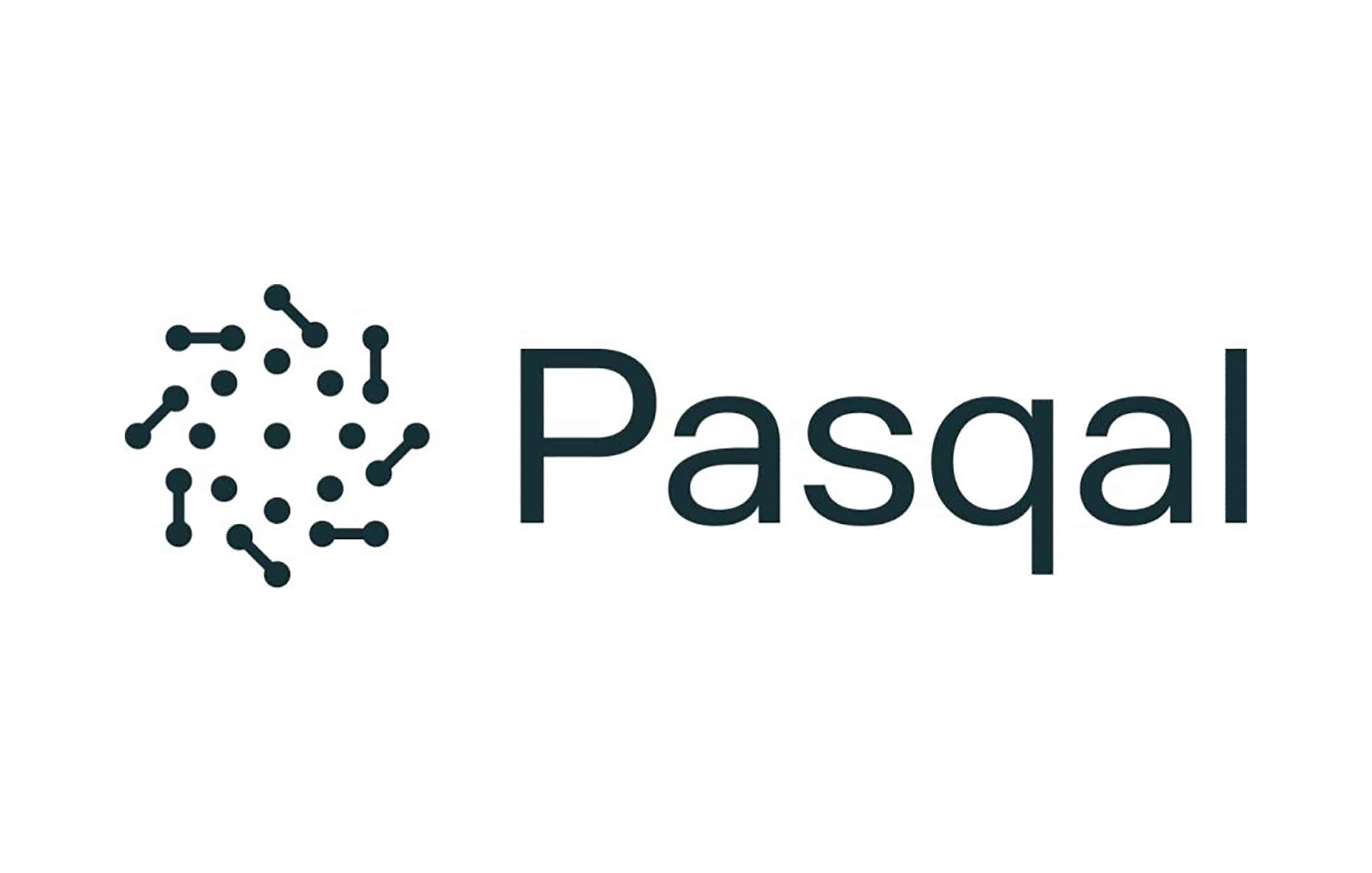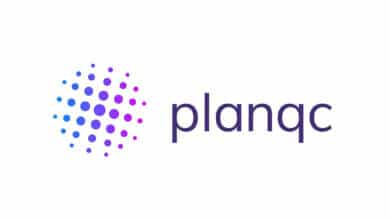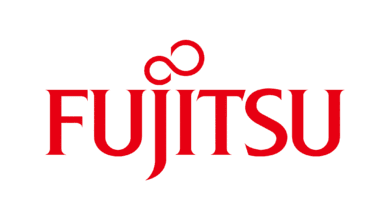Pasqal

Table of Contents
(This profile is one entry in my 2025 series on quantum hardware roadmaps and CRQC risk. For the cross‑vendor overview, filters, and links to all companies, see Quantum Hardware Companies and Roadmaps Comparison 2025.)
Introduction
Pasqal is a French pioneer in neutral-atom quantum computing, building large, reconfigurable arrays of laser‑trapped Rydberg atoms and delivering them as on‑prem accelerators for HPC centers and industrial labs. Unlike many peers that separate “today’s NISQ” from “tomorrow’s FTQC,” Pasqal’s strategy is explicitly continuous: ship useful analog/digital processors now, and upgrade the same platform – via photonic‑integrated control, higher fidelities, and modular scaling – into a fault‑tolerant machine by the end of the decade.
Its 2025 public roadmap maps a clear climb: ~1,000 physical qubits and the first logical qubits by 2025; a quantum-advantage demonstration on a 250-qubit device in 2026; new modular generations (Vela, Centaurus) that lift qubit counts toward 10,000+ and introduce early FTQC in 2027-2028; and, by 2029-2030, systems targeting ~100-200 logical qubits with error rates low enough to execute meaningful, error‑free circuits. Core to this plan are PIC‑enabled control (accelerated by the AEPONYX acquisition), aggressive improvements in two‑qubit fidelities and parallelism, and a design philosophy that treats analog value today as a stepping stone to digital, error‑corrected value tomorrow.
Milestones & Roadmap
Pasqal, a French neutral-atom quantum computing leader, unveiled a detailed 2025 roadmap outlining its path from near-term quantum advantage to large-scale fault tolerance. Key milestones include:
2024-2025: Delivered the first neutral-atom quantum processors to HPC centers (e.g. the 100+ qubit Orion Beta “Ruby” system at GENCI in France and another at Jülich in Germany). By end of 2025 Pasqal plans to reach ~1,000 physical qubits and demonstrate 2 logical qubits using error correction. The Orion Gamma QPU (third-gen platform) with >140 qubits is slated for delivery in late 2025. Pasqal is also expanding deployments to new sites in Canada, the Middle East, and Italy.
2026: Achieve a major quantum advantage demonstration on a 250-qubit QPU optimized for a real-world industry problem, targeted in early 2026. This system is designed to outperform classical HPC on specific tasks (e.g. optimization or quantum simulation).
2027-2028: Introduce next-generation modular processors for scale-up. Vela (2027) will feature 200+ qubits and begin integrating error-correction capabilities. Centaurus (2028) will push toward 10,000 physical qubits and support “early FTQC” – early fault-tolerant quantum computing with small logical qubit counts. By 2028 Pasqal expects to have on the order of 20 logical qubits through improved fidelity and coding.
2029-2030: Realize truly large-scale systems. Lyra (2029) is projected to deliver on the order of 100 high-fidelity logical qubits, marking an “impactful FTQC” capable of complex algorithms. By 2030, Pasqal targets ~200 logical qubits with error rates low enough for useful computations. This will likely require >10,000 physical qubits networked across modules. Pasqal’s roadmap thus compresses the timeline to useful fault-tolerance by leveraging modular upgradable hardware – the same devices running analog modes today are planned to evolve into fully error-corrected quantum computers.
Focus on Fault Tolerance
From the outset, Pasqal emphasizes a seamless bridge to fault tolerance while delivering value in the interim. Its neutral-atom processors can operate in analog mode (continuous, analog simulations) for near-term applications, but are being engineered as a future-proof platform that can transition to digital, error-corrected operation on the same hardware. In Pasqal’s 2025 roadmap, one of the three core pillars is an “accelerated path toward digital FTQC (fault-tolerant quantum computing)”. Concretely, Pasqal is ramping up logical qubit counts: starting with 2 logical qubits in 2025, aiming for 20 by 2027, ~100 by 2029, and 200 by 2030 through better error correction and scaling.
To reach these goals, Pasqal is innovating on both qubit fidelity and integration of error-correction. They plan to incorporate Photonic Integrated Circuits (PICs) into next-gen neutral-atom chips (a strategy accelerated by Pasqal’s acquisition of photonics company AEPONYX). These on-chip photonic control elements will dramatically improve laser stability, reduce noise, and enable precise multi-qubit gating – all critical for error correction. Higher native two-qubit fidelities and fast, parallel gate operations are expected as PICs replace bulk optics. Pasqal is also exploring advanced error-correcting codes suitable for neutral atoms. By improving physical qubit performance (targeting 99.9% fidelities) and using modular architecture, Pasqal intends to demonstrate a few logical qubits (“break-even” error rates) as early as 2025, then rapidly scale the number of logical qubits toward the hundreds by decade’s end.
Notably, Pasqal’s roadmap frames fault tolerance as a continuum: deliver “quantum value” now via high-quality analog/digital computations, while iteratively adding error correction in each hardware generation. The company’s upgradable platform means clients can deploy a Pasqal QPU today for specific tasks, and that same system can be progressively upgraded (with more qubits, PIC control, and software) to support logical qubits in the future. This pragmatic approach focuses on early demonstrations of fault tolerance (e.g. a few logical qubits solving problems longer than any single physical qubit could) by 2025-2027, then scaling up logical qubit counts once the concept is proven. By 2029, with ~100 logical qubits, Pasqal expects to be running truly error-free circuits for meaningful applications, essentially entering the fault-tolerance era ahead of many competitors that are still targeting a similar timeframe.
CRQC Implications
Pasqal’s aggressive timeline towards hundreds of logical qubits by 2029-2030 has clear implications for cryptographically relevant quantum computing (CRQC), though Pasqal itself couches its goals in terms of industry applications rather than breaking encryption. With ~100 logical qubits projected by 2029, Pasqal would still be below the estimated threshold for factoring RSA-2048. Recent research from Google indicates that roughly a million physical qubits (on the order of 1000+ logical qubits with error correction) running for a week are needed to break 2048-bit RSA. Pasqal’s 200 logical qubits in 2030, if achieved, would likely not suffice to crack RSA using Shor’s algorithm – it’s perhaps a fifth to a quarter of the logical qubits needed based on current estimates. However, it would be a significant step toward the CRQC regime. For perspective, 200 logical qubits at very low error rates could factor smaller (1024-bit) RSA keys or attack certain cryptographic primitives, but RSA-2048 would remain safe until machines are scaled further.
That said, Pasqal’s roadmap aligns with the general industry consensus that CRQC-capable machines may emerge around 2030 if trends hold. Pasqal’s focus on high-fidelity qubits and faster error-correction cycles may allow it to achieve useful cryptographic demonstrations with fewer qubits. For example, if each Pasqal logical qubit has higher fidelity or can perform more gates per second (thanks to parallel operations in a neutral-atom array), the overhead for cryptographic algorithms might be reduced. Pasqal projects that by ~2028, its modular neutral-atom architecture could run “domain-specific quantum breakthroughs” – potentially including quantum chemistry or optimization – which, while not directly about cryptanalysis, indicate a capability to handle complex problems at scale.
In short, Pasqal does not explicitly claim any “Q-day”, but its 2030 target of 200 logical qubits underscores that the gap to CRQC is closing. If subsequent generations beyond 2030 continue the exponential growth (e.g. 1,000+ logical qubits by the early 2030s), Pasqal or its peers would then pose a direct threat to RSA and other classical crypto. For now, Pasqal’s 2030 machine would reinforce the urgency of post-quantum cryptography, as it represents a substantial fraction of the capability needed for CRQC. Governments and companies should note that even mid-sized players are aiming for triple-digit logical qubit counts on similar timelines as the tech giants – a sign that CRQC could arrive via multiple technology paths, possibly sooner than anticipated.
Modality & Strengths/Trade-offs
Pasqal uses neutral atoms (rydberg atom arrays) as qubits. Each qubit is an ultracold neutral atom (often rubidium or cesium) trapped in an optical lattice or tweezer array and manipulated via laser pulses. A key strength of this modality is excellent scalability: Pasqal has already shown the ability to trap over 1,000 atoms simultaneously in a 2D array. Adding qubits is mainly a matter of expanding the optical array, which is far easier than fabricating thousands of solid-state qubits. Also, all atoms of the same species are identical, which helps with uniformity. Pasqal’s approach benefits from high connectivity as well – using Rydberg interactions, any two atoms in the array can be made to interact by exciting them to Rydberg states, giving a basically all-to-all coupling within a certain radius. This can simplify two-qubit gate implementation for algorithms and error correction (no need for nearest-neighbor only gates as in some solid-state systems).
Another strength is hybrid analog/digital operation. Neutral-atom devices can naturally simulate physics by analog Hamiltonian evolution (useful for e.g. material simulations), and Pasqal has leveraged this to solve optimization problems and differential equations in analog mode. These same devices can perform gate-based digital quantum computing with single- and two-qubit gates via lasers. Pasqal’s roadmap banks on this flexibility: customers get value now (through analog quantum advantage in specific domains) and the hardware incrementally upgrades to full digital quantum computing with error correction. The “upgradable” hardware platform is a differentiator for Pasqal – for example, the Orion series QPUs installed in 2024 can be improved via adding photonic controls (PICs) and better calibration, allowing higher gate counts and eventually logical qubits, without scrapping the whole system.
In terms of performance, neutral atoms boast relatively long coherence times (on the order of 100 ms for atomic ground states, since atoms are isolated and only weakly interact until purposefully excited). Pasqal can also leverage advanced techniques like atomic state doping or cooling to improve qubit stability. The company’s integration of photonic control chips (from AEPONYX) is expected to yield higher gate fidelities and repetition rates – e.g. moving from ~1 Hz operation to 100 Hz or more by 2028. Indeed, Pasqal’s published roadmap indicates a progression in two-qubit gate fidelity from ~95% in early prototypes to 99.9% by 2029, and an increase in gate parallelism (number of simultaneous operations) thanks to on-chip optics. If they achieve ~99.9% two-qubit fidelity, neutral-atom logical qubits will require far fewer physical qubits than today’s lower-fidelity devices.
Trade-offs and challenges of neutral atoms include relatively slow gate speeds and sensitivity to environmental noise. Two-qubit gates (via Rydberg interaction) typically take on the order of a few microseconds up to ~1 millisecond – much slower than superconducting qubit gates (tens of nanoseconds). This can limit circuit depth unless error rates are extremely low or many operations run in parallel. Pasqal is mitigating this by parallelizing operations across the atomic array (many pairs of atoms can undergo gates simultaneously, since lasers can be multiplexed). Another challenge is fidelity: while single-qubit (rotation) fidelities are very high (>99.5%) for neutral atoms, two-qubit gate fidelities have lagged behind – currently on the order of 97-98% in the best experiments. This is due to issues like laser phase noise, motion of atoms, and Rydberg excitation errors. Pasqal’s use of PICs to stabilize laser delivery and control phase should help push fidelities into the 99%+ regime. They’ve also hinted at using techniques like “magic wavelength” trapping to reduce decoherence during gates. Another limitation is that mid-circuit measurement and feedforward is hard on neutral atoms (measuring an atom typically causes loss). Pasqal may circumvent this by using additional ancilla atoms or faster optical readout so that error syndromes can be extracted without disturbing the data – a capability likely needed by the time they attempt 100+ qubit error correction.
A distinctive strength of Pasqal’s neutral-atom approach is natural error mitigation through analog error suppression. In analog mode, the system can find optimal solutions even if individual operations are noisy, by virtue of how quantum annealing or analog evolution works. Pasqal has reported success in solving certain optimization problems with mid-size (~100 atom) analog QPUs where classical algorithms struggle. This gives them real-world use cases (e.g. in materials science, as they cite for quantum simulations by 2024) even before full fault tolerance. It also allows Pasqal to iterate and improve hardware in an application-driven way. In summary, Pasqal’s modality excels in scalability and flexibility, at the cost of requiring significant engineering to boost gate fidelity and speed. If they hit their marks (incorporating photonic controls, achieving 99.9% fidelity, etc.), neutral atoms could become a formidable platform: potentially offering the best of both worlds – large qubit numbers and error-corrected performance. Pasqal’s heavy investment in this path (including acquiring photonics and hiring top quantum error correction talent) indicates they are aware of the trade-offs and are actively addressing them.
Track Record
Pasqal is a younger company (founded 2019), but it has built a solid track record of technological progress and delivering on promises. In 2022, Pasqal merged with Qu&Co and demonstrated 100+ atom quantum simulations, signalling early success in scaling neutral-atom systems. By 2023, Pasqal had shown “quantum advantage” experiments in analog mode for certain dynamics simulations and had mapped out a credible plan for hybrid analog-digital use. A key achievement came in 2024-2025: Pasqal deployed full systems to customer sites, notably installing a 100-qubit quantum processor at the French national HPC center and another at Jülich in Germany. These were among the first instances of quantum computers integrated on-premise in supercomputing facilities, underscoring Pasqal’s ability to deliver hardware outside its own lab. The fact that Pasqal’s machines were accepted by these prestigious centers speaks to the reliability of their hardware (the systems must meet certain operational standards to be useful in HPC workflows).
Moreover, Pasqal has been steadily increasing its qubit counts and performance as per its timeline. After starting with 50-atom demonstrators, Pasqal’s Orion series scaled to 1000+ atom capacity (though not all used as qubits simultaneously) by 2023, and the company achieved high-profile contracts. It secured over €100M in funding (including a €100M round in early 2023) that enabled acquisitions like AEPONYX (2025) to strengthen its technology stack. Each year, Pasqal has hit a notable milestone: e.g., a 200-atom quantum simulation of a material in 2022, a proprietary quantum workflow solving a real aerospace optimization in 2023, and in 2025 the launch of a cloud-accessible Pasqal Quantum Community with open-source tools to widen adoption. They also announced partnerships with major players (e.g. working with NVIDIA and IBM for integrating QPUs into classical HPC workflows), demonstrating a collaborative approach and real-world deployment focus.
An important aspect of Pasqal’s track record is transparency and realism. Unlike some startups that promised thousands of qubits out of the gate, Pasqal has been relatively measured, with a roadmap that clearly ties qubit counts to specific technical breakthroughs (like PIC integration by 2027, etc.) So far, they have met their interim goals (for instance, delivering the “Orion Beta” qubit systems on schedule in 2024-25, and achieving a 2D array of >1000 atoms as announced). Their public roadmap release in June 2025 is itself a sign of confidence – the company felt ready to commit to timelines such as 10,000 qubits by 2028 and 100 logical qubits by 2029. This suggests that internal R&D benchmarks (e.g. demonstrating small codes or improving gate fidelities) have likely been hitting targets.
Pasqal’s leadership and team lend credibility as well. The company was co-founded by Alain Aspect (Nobel laureate in Physics 2022) and other leading atomic physicists, and it has strong ties to the Institut d’Optique. This deep expertise in atomic control is evident in their peer-reviewed publications (e.g. experiments with Rydberg atom entanglement). They have also been pragmatic on the business side: focusing on near-term revenue by offering quantum solutions services (they tout “get results in 4 weeks” packages) and securing government contracts. This gives them a steadier runway to pursue the longer-term roadmap. Overall, Pasqal’s track record is one of steady scaling and dual-use (analog/digital) success. While they don’t yet have an error-corrected qubit or the largest quantum volume in the industry, they have delivered actual useful quantum systems to end users sooner than many, and have set the stage to accelerate into fault tolerance in the next few years.
Challenges
Despite Pasqal’s momentum, significant challenges loom on its road to fault-tolerance. Scaling to thousands of neutral atoms with high fidelity is an unprecedented engineering challenge. Thus far, Pasqal’s largest published experiments involve on the order of a few hundred atoms; going to 1,000+ stable, individually controlled qubits will test the limits of optical engineering. Maintaining uniform laser illumination and trapping conditions across such a large array can be difficult – variations in laser intensity or beam pointing can introduce qubit-to-qubit variability or loss. Pasqal’s plan to use photonic integrated circuits to distribute control signals is innovative, but integrating PICs into a vacuum chamber with cold atoms is cutting-edge and may present unforeseen integration issues (e.g. light leakage, heat dissipation near cold atoms, etc.). Achieving 5×10-5 error rates (99.995% fidelity) on two-qubit gates – roughly what’s needed for effective quantum error correction – might be especially tough for neutral atoms, given current ~2-3% two-qubit error rates in the field. While Pasqal projects reaching 99.9% by decade’s end, getting beyond that may require new tricks (like error-transparent gate designs or better atomic states).
Another challenge is error correction overhead and system complexity. Even if Pasqal attains 100 logical qubits by 2029, that could involve managing perhaps thousands of physical qubits and a complex network of entangling operations. The control systems (laser arrays, RF electronics, PICs, etc.) will become very complex to orchestrate. Pasqal will need to implement real-time feedback and error syndrome extraction in a system where measurement is non-trivial. They might explore methods like repetitive parity checks via auxiliary atoms, but this is largely unproven in neutral-atom platforms (most error-correction feats so far have been in ion traps or superconducting qubits). Additionally, neutral atoms lack fast, non-destructive measurement out-of-the-box – this could slow down the error correction cycles or force compromise in code design.
Thermal and mechanical stability will also be a concern as the setups grow. Neutral-atom qubits are trapped by laser beams, so any mechanical vibration or slight drift in optics can knock qubits out of place or decohere them. Pasqal’s larger systems must operate possibly for days (for long computations or for iterative quantum error correction), so the stability of optical alignment over long periods is crucial. Environmental isolation and active stabilization systems will add to engineering complexity.
Competition and pace pose another challenge: Pasqal is racing against well-funded superconducting and ion-trap efforts which have a head start in error correction demos. By focusing on an all-atoms approach, Pasqal has to hope that its technology can leapfrog in scale and catch up in fidelity. If, for instance, superconducting teams achieve 100 logical qubits by 2027, Pasqal’s selling point would need to be higher scalability or lower cost. The market and investor pressure to keep up with projections can be intense – as seen with some other startups, missed milestones can hurt credibility. Pasqal will need to execute nearly perfectly on its roadmap to justify its aggressive claims (e.g. 10,000 qubits by 2028 is extremely ambitious and will require breakthroughs in parallel laser control and vacuum system design).
Finally, talent and interdisciplinary integration are non-trivial challenges. Pasqal’s roadmap spans fundamental physics (Rydberg interactions, new qubit types like potentially nuclear-spin ancilla for memory), optical engineering, photonic chip fabrication, software (for hybrid workflows), and algorithm development. Coordinating these efforts and delivering an integrated system will test the company’s project management. The acquisition of AEPONYX adds photonics expertise, but integrating that team and tech into Pasqal’s products must be done without slowing progress. As with any acquisition, cultural integration is a risk – bridging a Canadian photonics firm with a French atomic hardware team must be managed smoothly. On the customer side, Pasqal also has to support the early systems deployed at HPC centers, which means devoting resources to maintenance and user support even as R&D continues.
In summary, Pasqal’s challenges lie in scaling up while maintaining extreme precision. They must solve issues of fidelity, stability, and complexity that come with large neutral-atom arrays. However, given their focus and the fact they are already hitting notable benchmarks (and generating revenue with today’s machines), Pasqal has positioned itself as a serious contender. If they can address these technical hurdles, their neutral-atom approach – with its inherent scalability – could allow them to catch up to, or even surpass, the more mature platforms in the race to fault-tolerant quantum computing.
Quantum Upside & Quantum Risk - Handled
My company - Applied Quantum - helps governments, enterprises, and investors prepare for both the upside and the risk of quantum technologies. We deliver concise board and investor briefings; demystify quantum computing, sensing, and communications; craft national and corporate strategies to capture advantage; and turn plans into delivery. We help you mitigate the cquantum risk by executing crypto‑inventory, crypto‑agility implementation, PQC migration, and broader defenses against the quantum threat. We run vendor due diligence, proof‑of‑value pilots, standards and policy alignment, workforce training, and procurement support, then oversee implementation across your organization. Contact me if you want help.



